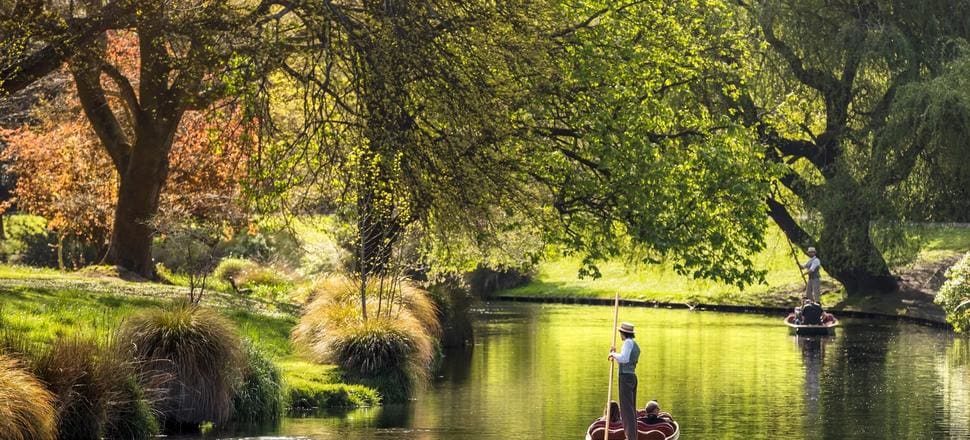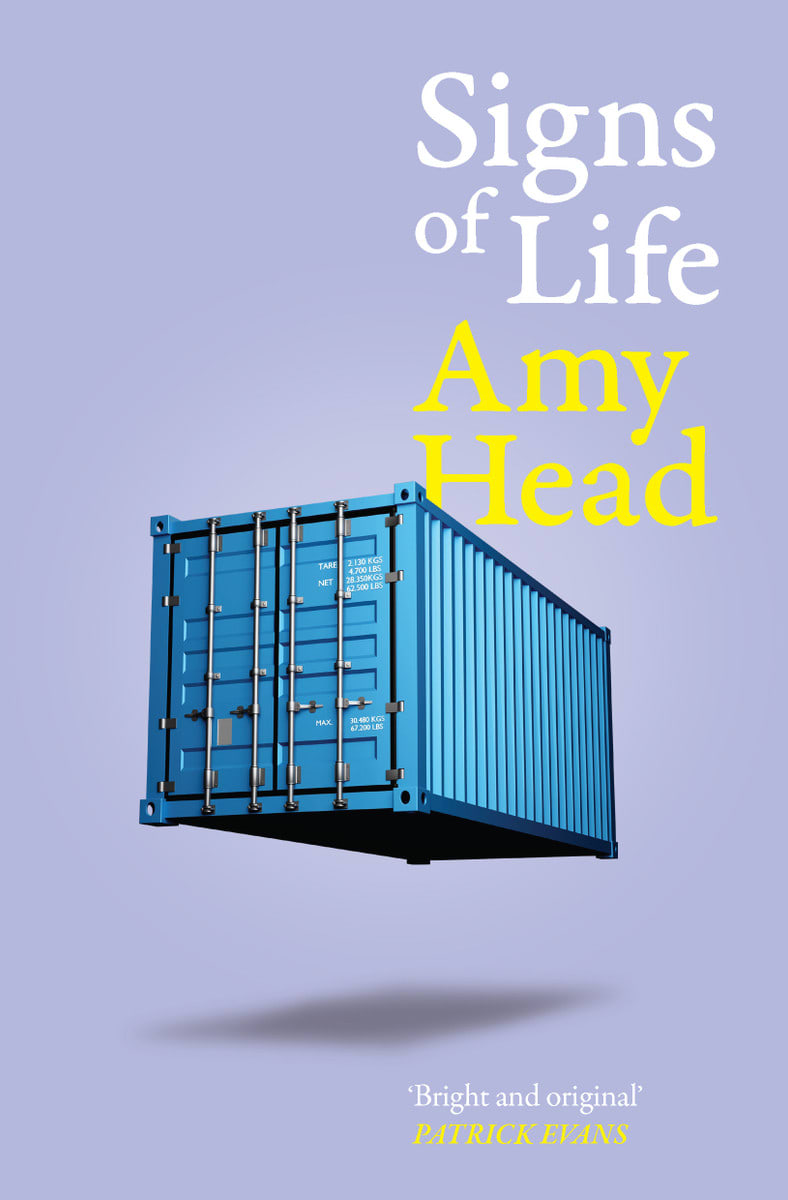
Two new novels explore a city battered by earthquakes and hanging on among "the motley motels and paint-peeled homes"
In his 2017 memoir Island Home, Tim Winton described the way in which geography, distance and weather had shaped his imagination: “The island continent has not been mere background,” he writes. “Landscape has exerted a force upon me that is every bit as geological as family.”
Throughout his many novels and short stories, that landscape, especially the wide, lonely coastline, the tough pubs and knockabout towns of Western Australia, bear down on his characters with a beautiful, inexorable and uncaring power. Place, in these books, matters. Not built place, not human-scaled place, but the overwhelming force of something bigger, some more magnificent, something more brutal.
Two new books by Ōtautahi Christchurch writers Amy Head and Carl Nixon build on that sense of landscape – an inner city suburb battered by the earthquakes of 2010-2011 (Head) and a small community on the sand-blasted, coastal edge of the city (Nixon).
The first words in the first story of Amy Head’s new collection of short stories Signs of Life set the scene: “Before the earthquakes there would have been no good reason for the shipping container waiting in the driveway of Bette’s new unit."
Containers knock against the walls of these stories – floating oddly on the front cover, lining roads or looming over domestic driveways as temporary storehouses for household belongings. Bette is staying with her daughter and son-in-law while her new unit, a necessary purchase after her family home of 40 years is deemed irreparable, undergoes repairs. This is the new uncertainty in the messy months and years after the earthquake, permeating rooms with the smell of condiments from broken bottles, leaving empty homes to the rats, weeds and graffiti, spreading fears of sinkholes, petrol shortages and the feared rupture of the alpine fault, rearranging roads in a constant reshuffle of road cones, cordons, steel struts, braced awnings and that old refrain – “Are you all right?”
Bette’s grand daughter Flick is not all right. She has dropped out of university, taken on a job in a print shop, moved into her aunt’s house with her grandmother, floated over to a circular publishing company, drifted away from one boyfriend, entered into a casual relationship with another, a trainee architect from Auckland. He leans into Flick with excitement in his eyes: “Not many people get to see their city being rebuilt”.
Flick and the other characters in Signs of Life do not share that excitement. Nothing is settled, nothing is still, housing is provisional, aftershocks rumble through the city, “as though a colossal finger had landed on the geological turntable, dragged them back a few degrees and let them go.”
Unlike the assurances of the city plans and urban programmes that proliferated after the earthquakes, the residents of Christchurch are not shaping a city, they are being shaped by it – by the broken roads and braced awnings and cordoned buildings, by a land that is never still, by a city that is changing shape before them.
“The people of the city,” concludes physiotherapist Carla, “were storing a lot of stress.”
Head’s Christchurch is recognisably Christchurch. The brick print shop in Colombo St where Flick works briefly, the cushion shop, the streets of working class Addington named after British poets and philosophers, the portacoms and cranes, the casino, marooned in a sea of evacuated spaces like a “poker-themed spaceship” – accurate snapshots of a city tipping between historical stability and flux.
But despite this deep sense of a particular place at a particular time, Head stands at a distance from her characters. She does not drill down into their lives or into the actual experience of the earthquake. In returning to Flick’s story, she alights on singular moments, moving back and forwards in time like lines of blanket stitch, barely touching before moving off again to the next story.
While Flick is the central character here – Signs of Life treads a fine line between short stories and novel – the book flits cautiously, tangentially, across other characters: Carla, getting advice from her daughter on her dating profile; Tony, having to prove his existence after a WINZ mix-up declared him dead; community patrol officer Gerard disengaging himself from a fearful home owner on the edge of the red zone. She hones in on small strangenesses – the large illustrated book, New Zealand: Graphic and Descriptive, rescued by Flick’s grandmother from her family home; the petitioner, calling on the city council for a tribute to chemistry professor Alexander Bickerton who taught Ernest Rutherford; the bus driver who takes his terrified student passengers to their homes.
These out-takes flash past like a discontinuous slide show, flickering across the abandoned houses, lost jobs and empty sections that permeated and to some extent still permeate the city. The best of these stories hold a mounting sense of tension – roads that are suddenly cul de sacs, red zone darkness rearing up on the edge of suburbs. Flick’s run through a pine forest becomes a slow creep of mounting threat, punctuated by the jagged light through the trees, a massive logging truck barrelling down a track, hazardous stumps and roots, the what-if of a major aftershock, the sudden presence of a lone dog, another runner – it is a remarkable depiction of formless fear, pervasive and palpable.
Head’s fractured map of her home town mirrors the unnerving disorientation caused by the earthquake but it is also remindful of her first novel Rotoroa (2018), set in a rehabilitation centre of alcoholics on the Hauraki Gulf island in the 1950s. Here again, was the same sense of detachment, an almost abstract sense of the story-teller’s surveillance, remote and unintrusive, slightly dream-like but sharp in its search for signs.
Where Head glances off her characters, Nixon’s fifth novel The Waters drills down into the lives of the Waters family in the seaside suburb of New Brighton. Here, Winton’s force of landscape is written into sun-hardened school yards, the dark pine trees, the motley motels and paint-peeled homes, the surf clawing relentlessly at the dunes. It is a place of tension, tragedy and imminent violence; of sun and salt and a homegrown, kickabout beach culture.
Described as a new novel in 21 stories, the book stretches four decades from 1979 to 2019, tracking the family from father Pat’s decision to sell the family farm in Governor’s Bay for a doomed property development project in New Brighton. Moving backwards and forwards across time, we see Mark, at 12 years and Davey, 9, moving into the double-bay villa next to the public reserve. It is dilapidated, dark, unloved, rats roll walnuts up and down inside the walls, their mother is ill, the neighbour is creepy. From here, we track the free-wheeling lives of the three children (Samantha is born shortly after the family arrives) before and after the death of their mother, before and after the foster parents, before and after Pat’s slide into drunkenness and his eventual retreat to a rundown family bach further up the coast. Through different voices –the narration moves seamlessly from first person to second to third – we learn of the violence, the racism and shattered dreams that blow across this landscape.
Most of these stories are told by one of the three children, or by Pat himself, but others characters are brought in to fill in details. We see Pat through the eyes of his lover Tracey, a good looking man in a nice suit, “one of those natural-born salesmen who could talk anyone into anything”. For Mark, “the old bastard” was careless with his family, selfish, occasionally violent, “and at one point after their mother’s death became a hopeless drunk.”
We see Pat’s wife, the children’s mother, through a brief conversation with a young wife-to-be in the confessional dark of a night time soak at Hanmer Springs hot pools; we see her later through the breathless, defensive, self-important account of neighbour Mrs Fischer.
We see Mark as the new kid at primary school, mercilessly hammering the biggest contestant in a game of bullrush then later running a local business company called Bullrush Developments, co-founded with his mate Graham. The name, we are told, “a joke between them”.
Mark also jokes about his damaged eye – an old war wound, he says. But the whole business of Mark’s eye, reckons Pat, as he vows to lay off the booze in preparation for the Family Court hearing required for his children to be returned to him, has been blown out of all proportion: “It was an accident, pure and simple.”
We hear Davey breaking the news to his brother he will not be joining him in the UK. “Everything’s fine,” he assures Mark. Everything is not fine. A drunken drug-fuelled Friday night out in the city with his mates, Andy’s shaved skull “giving off its own light like one of those deep-sea fish that’ve evolved to hunt way down in the darkness”, is shocking in its blind violence.
As if listening in to an old fashioned party line, these one-sided conversations, clipped references, repeated conversations piece together the story of the Waters.
Nixon has been this way before. The sand dunes, the corner dairy owned by the Asher family, the fictional New Brighton High School – all appeared in his first adult novel Rocking Horse Road in 2007. The fictional town of Kaipuna further up the coast, holding Pat with its promise of abundant crayfish, casual sex and cheap beer, was the setting for his 2020 novel Settlers’ Creek.
Some of the chapters in this book have appeared as stand-alone short stories in magazines and edited collections (if Signs of Life edges towards novel-ness, The Waters could also be a book of connected short stories). Some reiterate information we know or dart back to flesh out the missing detail in an earlier account, but the result is beautifully crafted and compelling, like holding up a prism and seeing the many ways the light refracts.
But it is the big-skyed, sandy landscape of Christchurch’s beach suburbs, so unlike the “brick and birdbath neighbourhood near the university” where the children’s aunt and uncle live, that shapes the story of the Waters. This is the backdrop for Sam’s tender first encounter with Scribbler, for Mark’s early sexual encounters, for the harrowing memorial for the victim of a ballooning accident, for the ease with which neighbour Mr McLean wins the trust of the young Waters boys, undermining their assurance that “they’d know a bad man if they saw one”.
While the earthquake-shattered city streets shape Head’s characters, it is this place of pine forests, the sound of the surf, the smell of sea lettuce, the estuary, brown and sluggish, that permeates these chapters. Like Winton’s Western Australia, the all-pervasive sun and wild arc of the beach form a memorable and convincing stage for the failed dreams, the drunkenness, the camaraderie and the casual violence – barely mentioned but never forgotten – under the big uncaring sky.
The Waters by Carl Nixon (Vintage, $37) and Signs of Life by Amy Head, (Te Herenga Waka University Press, $30) are available in bookstores nationwide.









